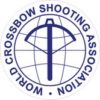Archery is Inclusive
There are 165 national federations within the World Archery “family” (as at May, 2020).
ARCHERY SA welcomes, encourages and supports the inclusion of culturally and linguistically diverse people in all areas of the organisation and aims to provide an environment where people from culturally and linguistically diverse communities feel:
- Welcome
- Represented
- Included in decision-making
- Able to participate
- Free from discrimination and racism
Individuals should be able to feel they can participate in this worldwide sport. All are encouraged to reflect this approach and policies have been developed for the assistance of, and adoption by Clubs (refer to ARCHERY SA Member Protection Policy). These assist in acknowledging that:
- Australia is a multicultural nation with a diversity of cultures
- this diversity is seen as a strength to be respected and used for the development of a tolerant, cohesive society
- all members & visitors have the right to use ARCHERY SA’s services, resources and access our programs
- barriers to participation are removed in the planning and delivery of programs and services
- all have the right to express and share their cultural heritage
- all have the responsibility to respect the cultural heritage, religion and language of others.
A STARCLUB encourages all members of the community to become involved with the club and provides a welcoming environment for everyone. A STARCLUB is committed to ensuring that all people, regardless of their cultural background and ability, have equal access to sport and recreation opportunities. STARCLUBs also consider how off-field behaviour, such as social functions, can reflect this openness.
For a Club to become a STARCLUB (and achieve one of the desirable criteria for the State’s sports funding programs) click the logo to start the process.
 Volunteers: Clubs have access to an online tool to help “Find Them, Keep Them, Back Them” – the V-Star volunteer management tool helps Clubs manage volunteers and provide for successful succession planning (click on the logo to take you to the V-Star home page).
Volunteers: Clubs have access to an online tool to help “Find Them, Keep Them, Back Them” – the V-Star volunteer management tool helps Clubs manage volunteers and provide for successful succession planning (click on the logo to take you to the V-Star home page).
Para-Archery
Archery, as a test of accuracy, strength and concentration, can accommodate a range of ages and abilities, including athletes with a physical disability (e.g. spinal cord injury, cerebral palsy, amputee, etc).
Within Australia, para-archers generally shoot alongside other archers and can compete in all competitions using modified equipment under (slightly) modified rules.
Competitors in Para-Archery shoot the same rounds, distances and events as other athletes in three functional classes (Open, Standing, and Wheelchair, within the Recurve and Compound divisions).
The international governing body of Para-Archery is World Archery, which manages this archery discipline, working with the International Paralympic Committee. All shooting is conducted under World Archery Shooting Rules, in conjunction with Para-Archery Rules.
To compete nationally and internationally, athletes with a disability are required to be classified to enable them to be properly allocated into one of the recognised classes. Classification is the responsibility of each athlete before competing.
To compete in international competition, the athlete must be internationally classified.
Athletes with a disability are assessed by a panel of international classifiers usually prior to the start of international events. The classifiers will allocate a class to each athlete and issue a classification card showing the class and the assistive devices the athlete is allowed to use.
In its evolution into a Paralympic sport, archery was originally a means of rehabilitation and recreation for people with a physical disability following the Second World War. The first archery competitions for people with a disability were held during the first International Disabled Games at Stoke-Mandeville, England in 1948 with participation of 130 athletes from two countries. Archery was also a demonstration sport at the 1948 London Olympic Games.
In 1960, archery was introduced officially to the world as a Paralympic Sport during the Rome Paralympic Games. Since then, archery has always been included in the Paralympic Games program. The sport, as an event embraced by competitors and spectators alike, truly “came of age” at the 2012 London Paralympics.
ARCHERY SA is working towards Para-Archery competition at its State events and encourages Clubs to offer similar opportunities within their activities. (Of course, State and National Para-Archery records can only be claimed by those who meet Para-Archery eligibility conditions and are suitably classified.)
A comprehensive explanation about the process of para classification, by former British archer, Nicky Hunt, can be viewed by clicking here.

















